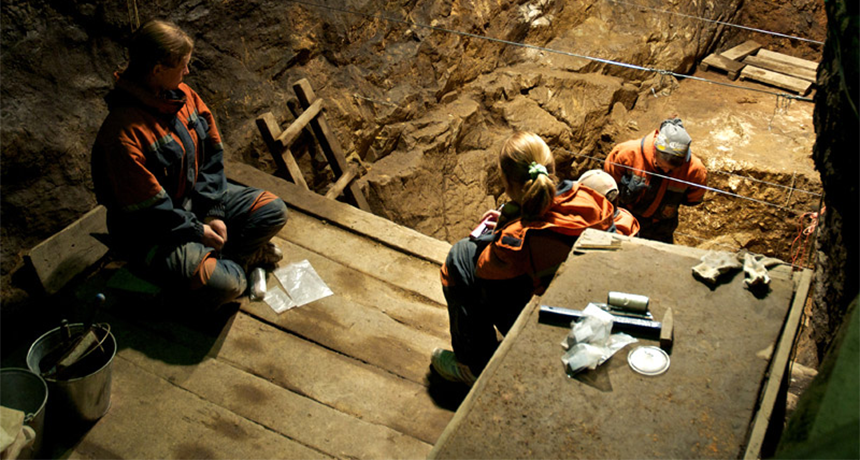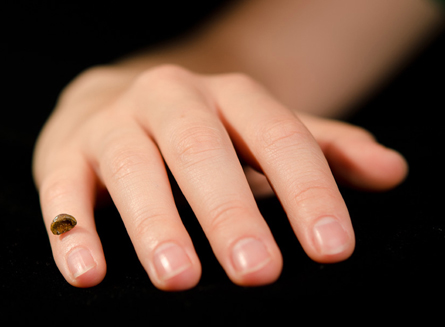Tiny fossil tells big tale
Scientists use a single finger bone from ancient, humanlike Denisovans to study their connection to modern people and Neandertals

The Denisova Cave, in Siberia, is home to the only remains of the ancient Denisovans.
MAX PLANCK INSTITUTE FOR EVOLUTIONARY ANTHROPOLOGY
Share this:
- Share via email (Opens in new window) Email
- Click to share on Facebook (Opens in new window) Facebook
- Click to share on X (Opens in new window) X
- Click to share on Pinterest (Opens in new window) Pinterest
- Click to share on Reddit (Opens in new window) Reddit
- Share to Google Classroom (Opens in new window) Google Classroom
- Click to print (Opens in new window) Print
Part of a finger bone and a couple of teeth are the only remains of an ancient humanlike population known as Denisovans. But these few fossils, found in a cave in Siberia, have a story to tell.
In August, scientists announced they used the tiny finger fragment — which once belonged to a young female — to identify all of the Denisovan genes. The researchers compared genes within the fossil with genes from 11 living people of different ethnic backgrounds. By noting which genes are similar and which are different among Denisovans and modern humans, scientists can learn more about both populations, and how they might be related.
A gene is information that’s passed on from parent to child. Genes determine much about a person, like eye color, maximum height and susceptibility to various diseases. A person’s genes can be found in a long, spiral-shaped molecule called DNA. Copies of the DNA molecule can be found in almost every living cell. After death, the molecule deteriorates over time. But scientists can learn a lot from just a snippet of a fossil that still contains DNA.
The scientists sampled DNA from people now living in Europe, China, South America and Oceania. The team found evidence of Denisovan genes in the DNA of people from Papua New Guinea, a Pacific island nation in Oceania. The finding points to a shared ancestry between the two populations.
Over time, genes mutate, or change, within a species. Comparing these changes can help scientists determine how closely related two populations or species are.
“We can now start to catalog essential genetic changes that occurred after we separated from our closest extinct relatives,” Neandertals and Denisovans, Svante Pääbo told Science News. Pääbo, a biologist from the Max Planck Institute for Evolutionary Anthropology in Leipzig, Germany, worked on the new study.

The only surviving human species is ours, Homo sapiens. Neandertals were a closely related species. Until more fossils are found, scientists can’t tell whether Denisovans came from a separate species.
When Pääbo and his colleagues compared the Denisovan DNA with chimpanzee DNA, they found fewer differences than those between modern humans and chimps. The Denisovans have fewer differences because they became extinct tens of thousands of years ago, leaving their DNA less time than modern humans’ to undergo changes.
Power Words
Denisovans An ancient humanlike population whose existence is known only because of a few fossils discovered in a cave in Siberia.
DNA, or deoxyribonucleic acid A material found in almost all living organisms and the main ingredient in chromosomes. DNA carries genetic information that’s passed from parents to children.
gene A region of DNA with the instructions for a specific task or protein in a cell.
fossil The remains or impression of a prehistoric organism preserved in petrified form or as a mold or cast in rock.
species A group of organisms consisting of similar individuals.







